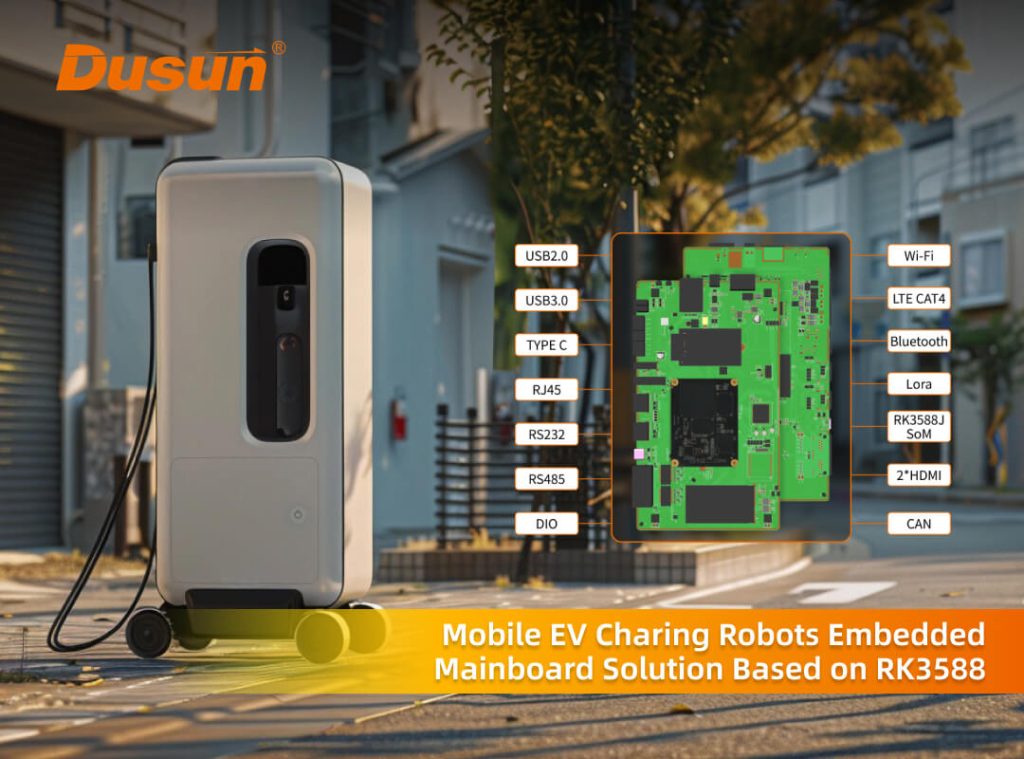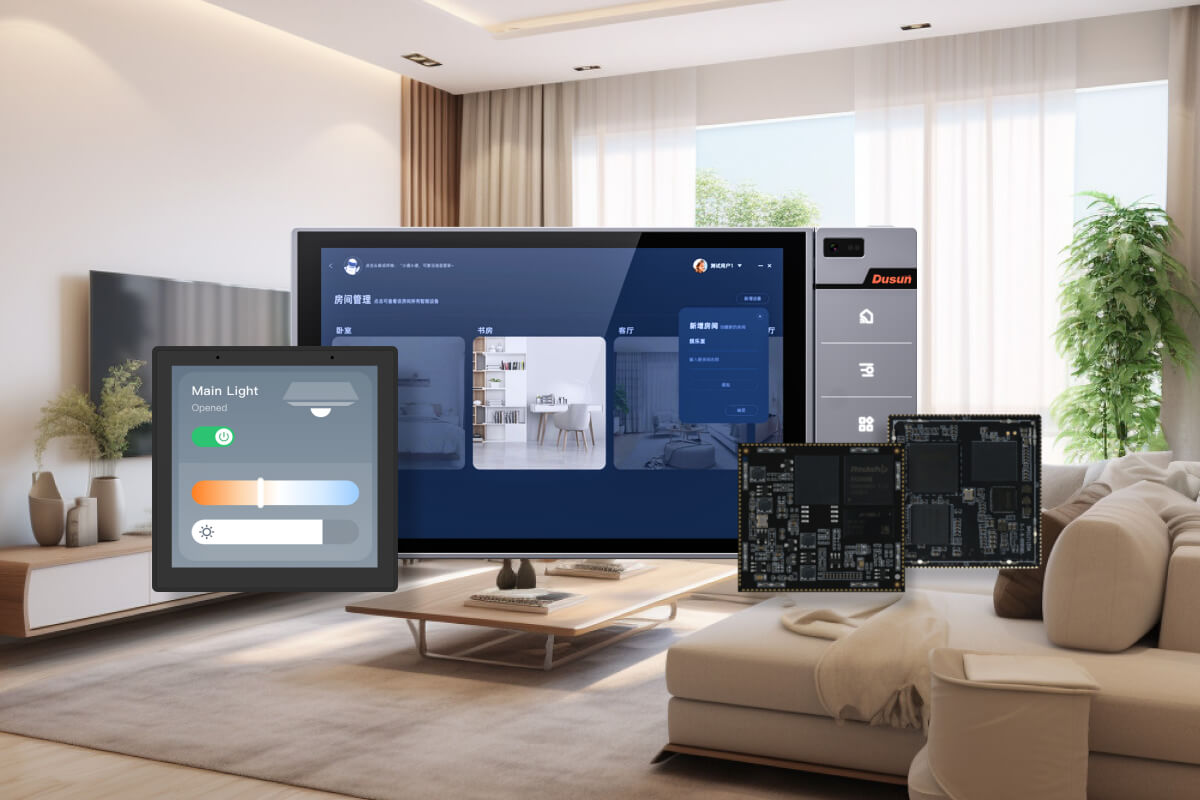So let’s look at how these charging robots work and why you should use the RK3588 or NXP i.MX8M Plus SoM (with carrier board) to develop them.
What Is a Charging Robot?
A charging robot is a mobile charging solution that can navigate autonomously toward the vehicle that has ordered the charging service. Its primary components include a control board, battery, navigation system (computer vision, radio transmission, lidar, lasers, etc.), and a motor to drive the wheels.
Essentially, the robot is an AMR or AGV with a large battery pack to store the required charging energy. You can also call it a power bank on wheels.
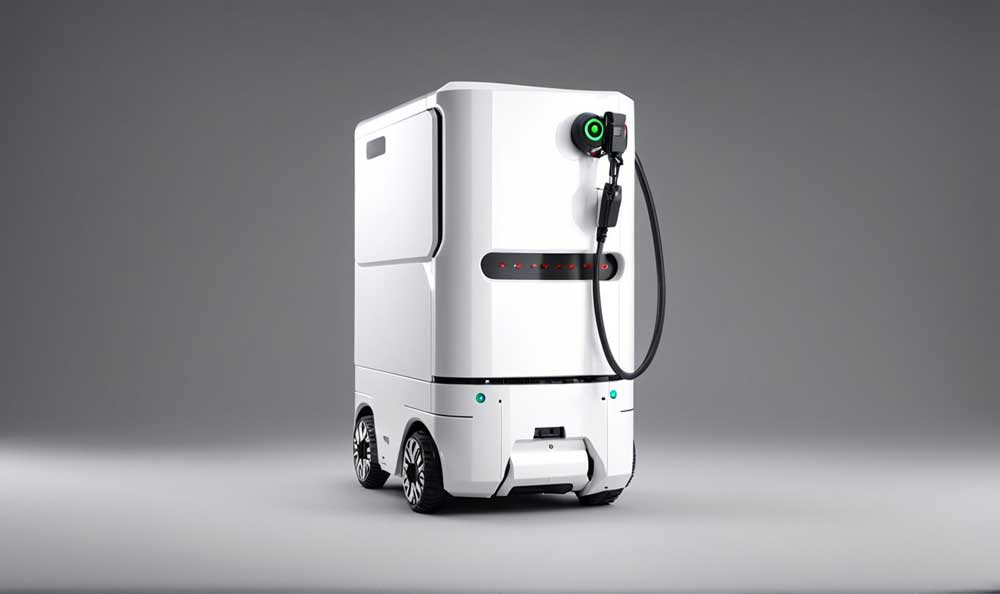
History of EV Charging Robot and Main Players
Better Place, an Israeli EV infrastructure start-up, was the first company to toy with the idea of EV charging robots in 2007. But the team shot down this idea because building this robot was costly and sophisticated.
However, the company’s idea was different from what we have today. Their charging robot was a robotic arm that extended out of the charging station to plug a connecting cable to the vehicle’s port on one side and to the charger on the other end.
Tesla joined this party in 2015 after CEO Elon Musk announced the idea on Twitter in 2014. But the company’s idea was similar to what Better Place had proposed 7 years earlier. Tesla worked on a “solid metal snake”, which was a robotic arm that moved out of the wall to plug into the car’s charging port.
At the time, EVs were not as popular, so there were fewer queues and waiting times at charging facilities. Therefore, the purpose of the arm was to eliminate the task customers had to do to plug in the charger manually. According to Better Place, this manual plugging-in was messy, so their idea was to make the process less messy for drivers.
When Things Changed
At the start of the decade, EV adoption exploded, with global sales doubling in 2021 due to falling prices and government subsidies. In the second quarter of 2024, the total EV sales grew by 21%, while ICE car sales fell by 9%, and projections show that 66% of global car sales will be EVs by 2030.
Going by this data, several EV charging infrastructure companies saw the opportunity early on and began inventing autonomous charging robots to cater to this high demand. The problem is that EV charging infrastructure hasn’t grown at the same pace as EV adoption. This has led to a gap that results in long charging queues.
Building charging stations isn’t cheap, so the idea behind charging robots is to optimize the efficiency of existing and new stations to handle more cars efficiently.
Companies like Mob Energy, Hyundai, EV Safe Charge, and NaaS are currently leading the plugging of this charging gap using autonomous robots.
Main Components of an Autonomous Charging Robot and How It Works
Regardless of the company behind the robot, each of these devices have similar components, which include:
- Main control system (primary control board with multiple I/O interfaces, powerful processor/SoC, NPU, GPU, etc.)
- Machine vision system
- Drive motors
- Battery
- Lidar
- 4G/5G network modules
- Speaker
- LED lights
- Large display
Overall, these components are used to run the systems below in the robot to make it work.
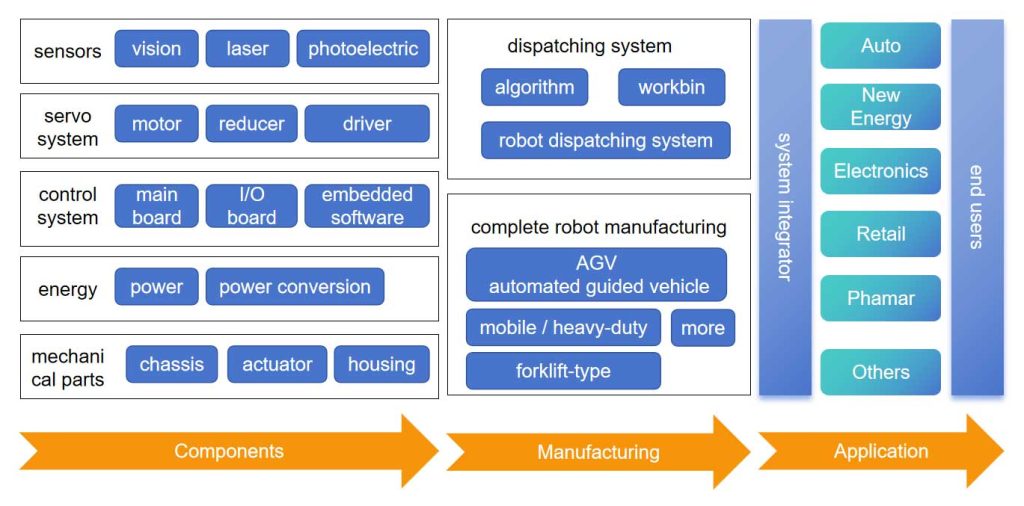
Navigation and Safety
AGVs and AMRs implement various navigation systems to direct themselves to the parked EV, but each one should provide precision, route planning, and path following. Ideally, these systems can use:
- Laser scanners or Lidar: These options (especially Lidar) are more popular for complex navigation systems because they create localized maps and recognize obstacles for avoidance.
- AI Cameras: Computer or machine vision using cameras has become popular in recent times due to the advancements in AI. This system can recognize objects and determine the robot’s location.
Motion
EV charging robots need mechanical components to move from the charging station to the EV. These components include motors for propulsion, steering systems for direction changing based on the vehicle location and to avoid obstacles detected by the navigation system. Braking is also critical for the motion system.
Vehicle Control
This vehicle control system manages the motion system to coordinate movement. It handles tasks like:
- Speed regulation when approaching the vehicle or obstacles (requires braking and power flow reduction to the driving motors)
- Reversing
- Controlling the steering degree
- Checking the robot for anomalies or failures in the motion system and taking the necessary action (can halt the movement and inform operators about the status).
Battery and Charging
The core of this robot is battery charging, so it should have a large capacity battery to store enough juice to refill EVs. But this is only the hardware. Other key components include:
- Battery Management System (BMS): Monitors and manages the battery for optimal recharging at the station and discharging when sending power to the EV. Its purpose is to extend the internal battery’s lifespan.
- Power Distribution Network: Comprises the components needed to send power from the battery to all other systems.
- Charging System: Communicates with the vehicle and exchanges data about the battery level.
There are two options to consider when designing the battery and charging aspect of this robot. The first is to use the regular battery recharging when the robot returns to the station. This takes time and renders it unusable during this period.
The second option is battery swapping. Although complicated to build, these robots will operate more efficiently to charge as many cars as possible in one day because swapping takes a short time. Nio has perfected battery swapping in its EV, and you can replicate this in charging robots.
User Interface
These robots should have HMI screens to indicate information like the charging status and alarms or issues for troubleshooting. Companies like EV Safe Charge have taken it a notch higher by including a large advertising screen on their Ziggy robot, which introduces another revenue stream.
IoT Connectivity
Charging robots need to communicate with external devices, like the vehicle, your phone, and the charging station, to exchange data about the battery charge level, payment confirmation, and diagnostics information or to alert admins about certain internal operation issues. This communication requires protocols like BLE and 4G/5G.
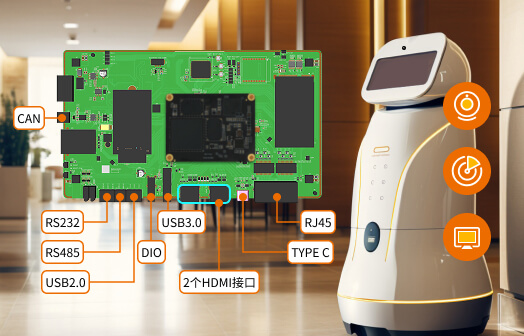
The Use of AI in EV Charging Robots
The primary role of AI in these robots is to run the 3D machine/computer vision system. Advanced AI algorithms run the visual recognition system that uses data from at least two cameras to identify navigation paths, spot the vehicle, identify its make and model, and find its charging port, all without human supervision.
Safe navigation can be challenging using computer vision on its own, so the AI can also incorporate sensor fusion, collecting lidar and laser sensor data to build a 3D model of the surrounding area in real time. This model enables the robot to flexibly adjust its route and speed to avoid obstacles and risks, making the charging process safe and smooth.

Introducing Dusun IoT’s AI-Enabled Control Boards for Charging Robots
Considering how EV charging robots work and their required functions, their main control board should have several key features, such as AI processing, high processing power, and rich interfaces.
We have two SoMs that meet these requirements.
RK3588 SBC for AGV and AMR
This SBC board runs on a powerful RK3588 64-bit SoC that has a heterogeneous processor boasting a powerful quad-core Cortex A76 chip to do the heavy lifting and a low-power quad-core Cortex-A55 for lighter tasks.
But more importantly, this SoC has an integrated 6 TOPS NPU with a dedicated NEON coprocessor for running object recognition, license plate, facial, and action recognition algorithms for the robot during navigation.
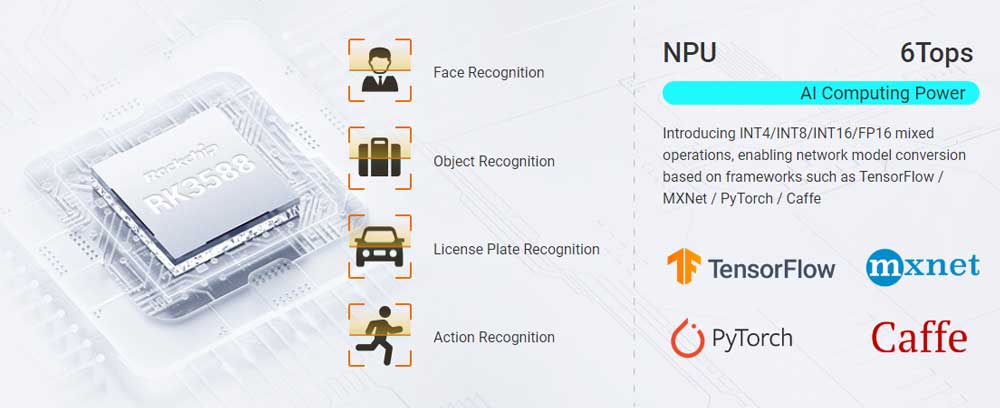
Other key features include:
- Rich interfaces to connect to different sensors (CAN, USB, PCIe, RS232, RS485, RJ45, etc.)
- 8K video encoding with two MIPI CSI and MIPI DC interfaces to connect to high-res cameras for computer vision navigation. It also has 1 HDMI-IN, a DVP camera interface, and a 48MP image signal processor.
- 8K video decoding for the information screen and advertising display if you want to diversify revenue streams. The board supports up to 7 different displays.
- Audio interfaces for the speaker
- Lithium battery interface to hook up the battery
- Ethernet, WiFi6, Bluetooth, and 5G/4G LTE connectivity options
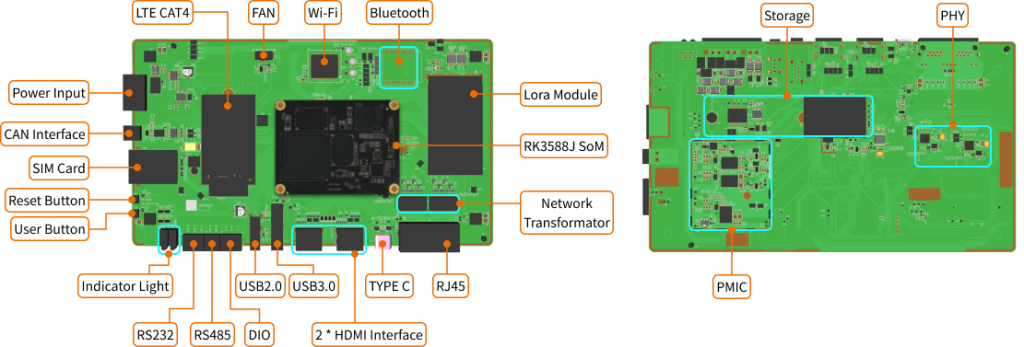
NXP i.MX8M Plus SoM (DSOM-130N)
The NXP i.MX8M Plus SoM is not as powerful as its Rockchip counterpart, but it is still up to the task. It runs on a powerful heterogeneous SoC, which in this case has a quad-core 1.8 GHz Cortex-A53 to do the heavy lifting and an energy-efficient Cortex-M7 for lighter tasks.
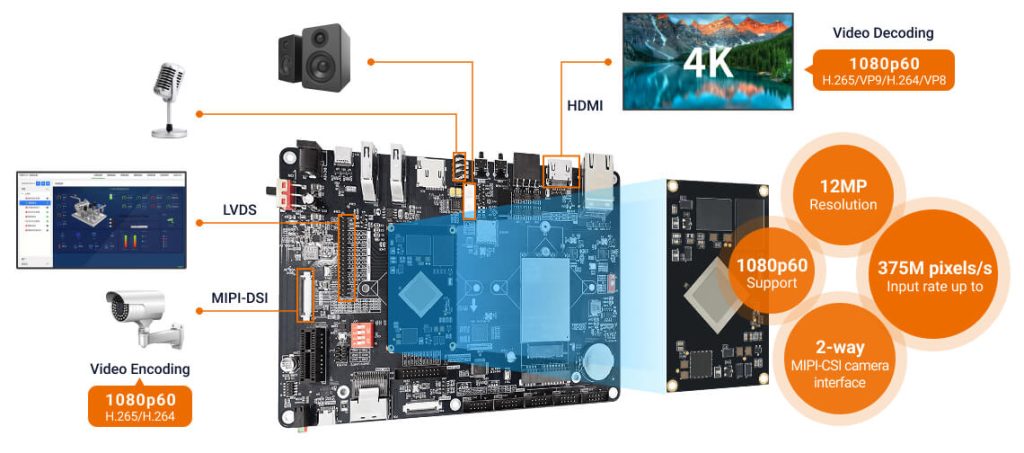
For AI computing, this SoC features an integrated 2.3 TOPS NPU, which accelerates machine learning inferencing for object detection and computer vision in general.
Other features include:
- Multiple I/O interfaces for sensor connectivity
- MIPI CSI interfaces and dual camera image signal processors for the camera vision system
- 4K HDMI
- 1080p video decoding
- Supports 3 display interfaces
- SPDIF for audio output
Final Words – Why Choose Dusun IoT?
In conclusion, charging robots are the next step in optimizing the EV charging ecosystem to handle the high number of electrified cars that are powering the green revolution. But to get this technology right, you need a powerful, reliable and dependable control board to run the robot.
The two Dusun IoT boards are up to the task, and I recommend the first one if you want the best performance. But both have industrial-grade constructions and should be able to withstand the charging station environment, vibrations as the robot is moving, dust, and other elements.
You can also trust us for secondary development of mainboards based on our SoMs because we have an in-house FAE team that provides technical support to reduce the time to market. These experts provide hardware design, BSP development, app development, and testing support to simplify your work and hasten your production schedule.
So if you’re looking for a control board manufacturer to get into this EV charging robot market or expand your operations, contact us to get started.









